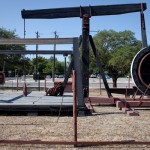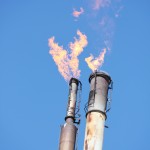EPA’s ‘Watch List,’ By the Numbers
The Center for Public Integrity’s iwatch News has put together a “by the numbers” look at toxic air emissions. The data comes from a once-secret EPA ‘watch list’ that shows repeated violators of environmental laws in the country, with many of them in Texas. StateImpact Texas, NPR and the Center for Public Integrity reported on the list and people affected by pollution earlier this month.
The list showed that even though many facilities were violating the law, the EPA and state agencies aren’t enforcing those laws in a timely manner. Only twenty percent of air pollution leaks are actually investigated by the EPA, and around one-third of those end up being prosecuted. The EPA publicly released the list on its website earlier this week.
Here’s a “by the numbers” look at some of the data from the list by the Center for Public Integrity:
726 complaints |
Regarding ‘carbon black,’ a fine, carbon-based dust and possible carcinogen, from the residents of Ponca City, Oklahoma, over an eighteen-year period. Most complaints were closed after inspectors couldn’t physically see carbon black coming out of a plant. |
2,000 acres |
Size of the tailings, or mining waste, pile from a copper smelter in Hayden, Arizona. Huge dust clouds from the ore pile, which spans more than 3 sq. miles, have at times obscured visibility for the town’s residents. |
464 facilities |
High-pollution plants the EPA placed on their internal ‘watch list,’ which includes serious or chronic violators of the Clean Air Act. |
3,000 ˚F |
Heat necessary to incinerate the hazardous waste of the Ash Grove Cement Company, a plant in Chanute, Kansas, whose cement kiln falls into a loophole of EPA’s air pollution standards, and emits hundreds of pounds of mercury into the air. |
270 days |
The minimum delay between the discovery of a Clean Air Act violation, and inclusion on EPA’s ‘watch list.’ |
74 % |
Percentage of increased birth defects in the three counties surrounding ‘Refinery Row,’ in Corpus Christi, Texas, as compared to the rest of the state. |
Here’s a map of violators flagged by the EPA in Texas.


